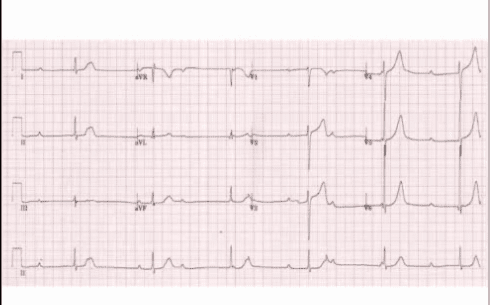Medical Council of Canada MCCQE - MCCQE Part 1 Exam
Total 230 questions
You are conducting a virtual appointment by voice-only call with a 68-year-old man regarding back pain. When he answers, you ask for him by name and identify yourself and the clinic from which you are calling. Which one of the following is the best next step?
A 42-year-old man presents with a history of fatigue and weight loss. He looks unwell, has a darker than usual complexion and his liver is enlarged. He is also found to have marked glycosuria. Which one of the following is the most useful diagnostic test?
You are evaluating a 75-year-old man with recently diagnosed prostate cancer and 2 painful metastases of the lumbar spine. Which one of the following therapeutic options is the most appropriate?
A 24-year-old woman presents with rapidly increasing lower leg pain. Less than 24 hours ago, she fell off her bicycle and had some minor abrasions. On examination, she is in severe pain and appears anxious. Local examination of her leg reveals mild discoloration with marked tenderness but no swelling in her calf. Which one of the following is the most likely diagnosis?
A 76-year-old man is brought by his family to your clinic with new-onset urinary incontinence. They state that the patient is experiencing a slowly progressing cognitive decline marked by memory disturbance, apathy, and attentional problems. Examination reveals that the patient has a stooped, forward-leaning posture and a wide-based gait. Which one of the following is the most likely diagnosis?
A 25-year-old man presents to the Emergency Department with diffuse abdominal pain and anorexia. He was tackled in a football game yesterday. He reports a 3-week history of sore throat and fatigue. Vital signs are as follows:
Blood pressure: 95/45 mm Hg
Heart rate: 96/min
Temperature: 37.6°C
Which one of the following is the most likely diagnosis?
A 67-year-old man presents to the clinic because of elevated liver enzymes. He is asymptomatic.His medical history is significant for type 2 diabetes, which is being treated with metformin. On physical examination, he looks well. His blood pressure is 125/75 mm Hg, his heart rate is 80/min, and his BMI is 35. Findings of the remainder of the examination are normal. His blood work results are as follows:
Platelet count: 170 × 10â¹/L (130–380)
Creatinine: normal
GGT: 75 µmol/L (49–93)
ALT: 146 IU/L (15–85)
AST: 101 IU/L (17–63)
Bilirubin (total): 17 µmol/L (3–17)
INR: 1.2 (0.9–1.2)
Which one of the following is the most likely diagnosis?
A 38-year-old woman presents with diffuse nodularity in the outer upper quadrant of her right breast. There is no obvious dominant mass, nipple discharge, or skin dimpling. There are no palpable lymph nodes. Which one of the following is the most likely diagnosis?
An 80-year-old woman presents to the Emergency Department with dizziness. She has a medical history of coronary artery disease. On examination, she is alert and oriented. Her vital signs are as follows:
Her electrocardiogram is shown in the image.
Which one of the following is the most likely diagnosis?
Blood pressure
80/60 mm Hg
Heart rate
40/min
Respiratory rate
12/min
Her electrocardiogram is shown in the attached image. Which one of the following is the most likely diagnosis?

A 32-year-old woman presents to the office with questions related to the mRNA vaccines that are approved for COVID-19. She is a health care worker. She gave birth to a healthy child 2 months ago. Before being immunized, which one of the following is the most important detail to elicit from the patient's history?



